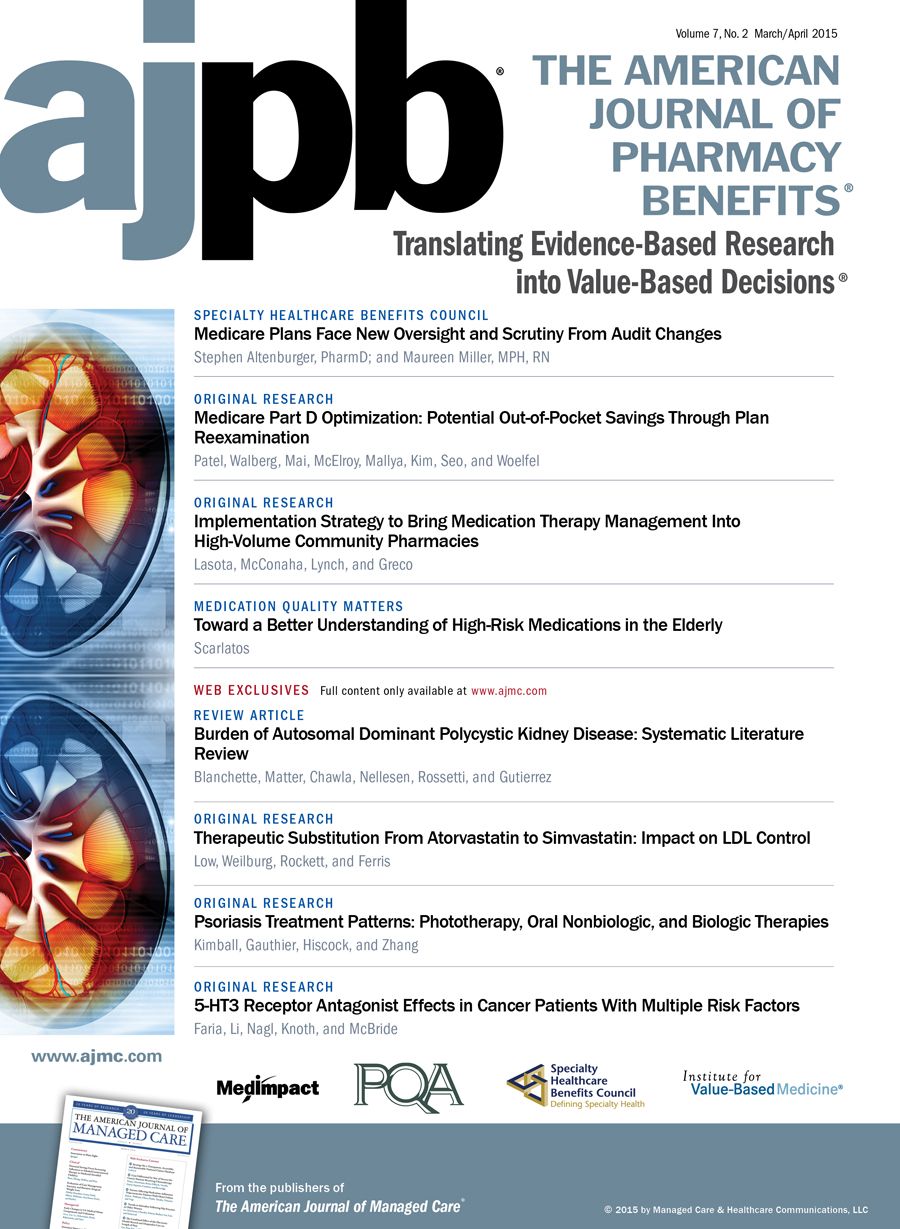Publication
Article
AJPB® Translating Evidence-Based Research Into Value-Based Decisions®
The Formularies Fight Back: AJMC Panelists Discuss How Discounts, Exclusivity Deals Should Expand HCV Treatment
Author(s):
Panelists agreed that the trend of specialization of traditional drug classes has implications not only for costs, but also for the role of community pharmacy if more drugs fall into the specialty pharmacy realm.
A year ago, outrage over the “$1000 pill” was everywhere, as commercial insurers and state Medicaid officials sounded off about the price of Sovaldi (sofosbuvir).1 Approved at the end of 2013, this breakthrough therapy would not simply treat hepatitis C virus (HCV)—rather, it would offer an actual cure, and thus limit downstream medical costs, including possible liver transplants.2
However, with Gilead charging $84,000 for a 12-week course of treatment, and with CDC estimates putting the number of Americans living with chronic HCV at 3.2 mil-lion,3 payers and large employers were bracing themselves for a wave of unbudgeted costs, especially in light of a rec-ommendation that everyone born between 1946 and 1964 be tested.4 In response, many commercial insurers, Medic-aid, and Medicare adopted treatment standards that called for only advanced-stage patients to receive the drug.
What difference a year makes. As recently discussed by an expert panel convened by The American Journal of Managed Care, the combination of competition in this class of HCV therapies with aggressive steps by pharmacy benefit managers (PBMs) has transformed the market. As Sovaldi sales reached $2.8 billion in the third quarter of 2014, Gilead announced the launch of Harvoni, a combi-nation of sofosbuvir and ledipasvir, priced at $94,500 for a 12-week supply.5 In December 2014, AbbVie received FDA approval of its regimen, Viekira Pak.6 But as 2015 un-folded, PBMs reached exclusivity deals and discounts for one drug over the other, which meant that the overall cost for treating HCV would be less than it was in 2014.
Taking part in the discussion were Ed Cohen, PharmD, FAPhA, senior clinical director, Walgreens; Matthew D. Har-man, PharmD, MPH, director, clinical pharmacy strategies, Employers Health; Keith Hoffman, PhD, vice president for scientific affairs at Adverse Events; and Steven Miller, MD, MBA, senior vice president and chief medical officer at Ex-press Scripts. Surabhi Dangi-Garimella, PhD, managing edi-tor of AJMC’s evidence-based series, served as moderator.
Role of the Formulary Manager
The panelists discussed how formulary managers bring order to the market; doctors and patients would love unre-stricted access to every drug, but that is not realistic. With-out an entity to determine which drugs must be offered, which are “clinical optional,” and which have no benefit, drug prices would be even higher than there already are, Miller said, and his fellow panelists agreed.
Exclusivity deals in which some plans selected Har-voni or Viekira Pak at a huge savings to their members help bring down costs for everyone, Cohen explained, although in some instances both drugs might be offered for certain clinical needs. “You have to provide the physi-cian with the ability to treat any patient who walks into their office,” Miller said.
“Time to Treat Everyone”
While the therapies are not the same the FDA’s ap-proval of Viekira Pak states the combination is to be used “with or without ribarivirin,” and requires 2 different pills a day6 its arrival offered enough competition for Sovaldi and Harvoni to allow PBMs to extract $4 billion in sav-ings from the estimated costs for 2015, according to Miller, including $1 billion just from Express Scripts’ customers. That change, he said, means that payers should ease off policies that restrict the drug to only the sickest patients. “It really is time to treat everyone,” he said.
However, even with competition and the prospects of more drugs in this class, Cohen did not think the price for HCV therapies would fall much lower. The point is, he said, that these are cures for HCV. “The overall therapy to save a life how do you put a price on it?” Pharmacy managers will be closely watching post marketing studies, including those relating to adherence, to see what differ-ences emerge among the drugs, such as discontinuation rates when the drugs are used in various combinations. Miller described Express Scripts’ “adherence guarantee” that refunds the cost to the health plan sponsor if the pa-tient doesn’t stick with the drug. Hoffman, whose firm provides post marketing data that PBMs and health plans monitor, said as that as data emerge, the different HCV drugs will separate from one another.
“There are a lot of data coming in,” Hoffman said. By year’s end, with several quarters’ worth of data comparing adherence on Sovaldi, Harvoni, and Viekira Pak, he said, “If there are differences, and if people see adherence is-sues, clearly those will be some interesting comparisons to make. Hopefully there will be formulary decisions that are appropriate.”
Lessons From the HCV Experience
Several panelists described the challenge of Sovaldi as one of “orphan drug pricing” even though HCV is not an orphan disease. They agreed that this is just the begin-ning. Orphan drug pricing is being seen in new immuno-oncology drugs to fight cancer, and in the new class of PCSK9 inhibitor class of drugs that could hit the market by August 2015 to fight low-density lipoprotein cholesterol.7
Harman questioned whether the healthcare system can sustain the trend of “specialization of traditional drug classes,” which he said could affect not only areas such as HCV which involves a one-time cost with a cure but also chronic conditions such as asthma and diabetes.
Panelists agreed that the trend has implications not only for costs, but also for the role of community pharm-acy if more drugs fall into the specialty pharmacy realm. “It will be very interesting to see how this all plays out,” Cohen said.







